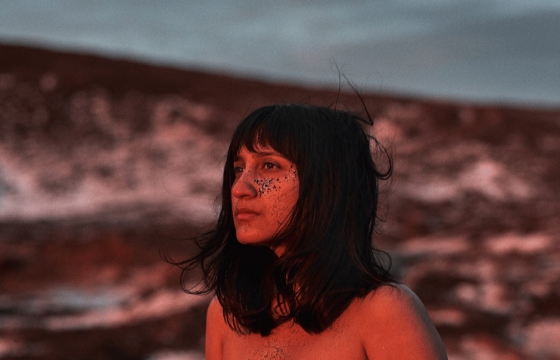Love is the axis round which Poulomi Basu’s apply turns—continuously so speedy and fervent it turns into blurred. With out love, it will be unattainable to seem so deeply at such unspeakable violence and chaos, as Basu has performed, turning the lens on her personal trauma, in addition to the ones felt jointly by means of ladies within the non-public, non-public and home spheres, and at the frontlines of war and eco-disaster.
Each component has its reverse. In Basu’s static and transferring photographs, we’re submerged into an international like Plato’s realm of bureaucracy: shadows, burning fires, painted our bodies, veils, and hybrid bureaucracy making a traumatic surroundings, remixing documentary fabrics Basu collects in continuously bad environments with concepts drawn from the Science Fiction novels of Octavia Butler or motion pictures by means of Jonathan Glazer. The protagonists on this moving choice universe, on the other hand, are all the time the South Asian ladies whose “our bodies are websites of political battle” in a patriarchal global—ladies who’ve been systematically silenced and subjected to violence however continue to exist. “We’re the monsters and the goddess,” says Poulomi, “we’re magic and the curse—I really like that form of rigidity, that even inside of a violent house there’s a good looks, and inside of a stupendous house, there’s darkness.”
Within the collection, Sisters of the Moon (2022), Basu seems in an eco-feminist story, bathed in airy mild, the central, Cyborgian persona in a dystopian close to long term. This speculative language that has been continuously evolving in Basu’s apply over time reveals advanced new expressions in Fireflies (2019-2021), a frame of pictures and movies introduced at Basu’s solo exhibition at Autograph, London previous this yr. Within the pictures, Basu seems, once in a while together with her mom—each survivors of home abuse. The paintings offers with their intertwined, intergenerational trauma, returning our bodies to the land to heal. “I wrote myself in those more than a few landscapes the place you spot me embedded with regards to earth as a result of I do consider that the deep, divine, female power existed even past patriarchal occasions, and the male is born out of the girl. There was once a matriarchal society and global ahead of it was once destroyed.”
Given the continued trauma and oppression dealing with ladies, specifically ladies of colour, inherent prior to now and endemic within the provide, the long run turns into the one viable house by which to consider ourselves. Sisterhood, harmony, and hovering empathy pour forth in Basu’s works. And they have got made a distinction: an early step forward paintings, Blood Speaks: A Ritual of Exile (2013-2016), at the perilous ritual apply of Chhaupadi in Nepal, the place ladies experiencing menstrual or postpartum bleeding are banished from their communities to reside in unsafe and unsanitary shelters, led to a transformation in regulation. “When I used to be rising up, I truly felt like I had no energy. So for me, the paintings was about subverting and destroying the ones energy members of the family.”
But sure up in Basu’s destruction is an act of introduction—the introduction of an area for romance. As Arundhati Roy as soon as wrote; “every other global is not just conceivable, she is on her method. On a quiet day, I will pay attention her respiring.” —Charlotte Jansen from the Fall 2022 Quarterly

